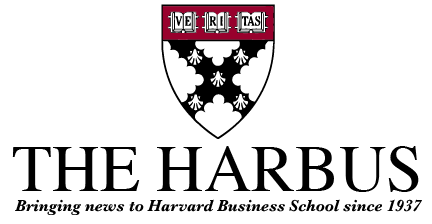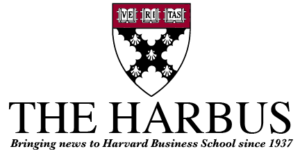This article is the second of four pieces detailing the history of African Americans at HBS for Black History Month, and is co-sponsored by the African American Student Union (AASU) and the Baker Library Historical Collection.
The years following World War II marked a dramatic transition in the U.S., especially in terms of race relations. The successful challenge of Brown vs. Board of Education struck down the farcical “separate but equal” notion that allowed segregation to flourish, and was followed by peaceful activism epitomized by Martin Luther King, Jr. His “I Have a Dream” speech in 1963 contributed to the 1964 passage of the landmark Civil Rights Act, which sought to fully implement the freedoms promised to African-Americans by the Bill of Rights.
By the late 60s, newspapers were rife with articles about demonstrations on college campuses against war, racism, and sexism. Not surprisingly, Harvard University was not immune to the turmoil going on throughout the country.
For nearly four decades after HBS admitted its first black student in 1929, the number of African Americans on campus remained in the single digits. Change came about in the fall of 1967 when five black students, now known as the “Founding Five,” met with Dean George Baker to express their concern about the dearth of African Americans at HBS. Baker responded that he didn’t know where to find them.
These five students founded the Association of Afro-American Students in February 1968 and committed themselves to improving diversity on-campus. Through outreach to their respective communities they were instrumental in increasing black student enrollment from 6 in 1967 to 27 in 1968. They couldn’t have done this alone – Dean Baker met them halfway by pursuing additional corporate funding for scholarships.
An astonishing tribute to the Founding Five’s success was that the class of 1971 graduated an unprecedented 67 black students.
Their time at HBS was full of open racial debates and controversy. On Thursday, December 11, 1969, 40 of these first-years, occupied Morgan Hall in protest. The demonstration, which began at 5:10 p.m., was a show of support for a sit-in by black Harvard College students protesting the lack of minority workers on University construction sites. The stated goals of the one-hour “action” included highlighting “the moral and social responsibility of the Business School to use its prestige and influence to resolve the present crisis…”
This was the first of several race-related incidents documented in The Harbus during the 1969-70 academic year. Blame for the failure of the Business Assistance Program (BAP), a volunteer consulting initiative to provide assistance to black entrepreneurs in Roxbury, was thrown back and forth across the racial divide in the pages of The Harbus in March 1970. At the same time, several articles questioning the qualifications and performance of black students at HBS were published in The Harbus.
On the front page of The Harbus published the week of April 16th was a bizarrely satirical article about a fictitious section vote to create an ABC – “All Black Corporation” – in the context of a first year class project. Word of the article leaked before publication and a group of African American students seized the entire week’s distribution of The Harbus in protest.
This tumultuous year ended with the HBS Afro-American Student Association going on strike in the beginning of May to demonstrate what The Harbus described as “their outrage over a variety of issues relating to them, both as students and as Black Americans.”
While the open racial debates of the early 1970s seem like ancient history, many of the controversial issues of 30 years ago are still with us. Sadly, the current number of black first years is about the same as it was in 1969. The African American Student Union and HBS African American Alumni Association are continuing to work with the HBS administration to realize the vision of the Founding Five.

